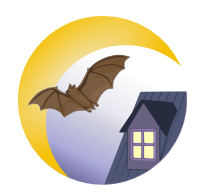Keen's myotis

Latin name: Myotis keenii
Average size: Total length of 6-9.5 cm
Wingspan: 21-26 cm
Weight: 4-6 g
External characteristics: Easily confused with the long-eared myotis, Keen's myotis is a small-sized bat in the vespertilionidae family. Its fur is dark brown and glossy, often with darker spots on the shoulders, while its underparts are lighter. The ears and wing membranes are dark brown. The outer edge of its uropatagium is bordered with tiny hairs that can be seen with a magnifying glass. The ears, when laid forward, reach just beyond the nose and possess a long, slim pointed tragus.
Habitat: In Canada, this species is only found in a few locations of coastal forests in British Columbia. Across its range, this species has been found roosting in rock crevices, among geothermally heated rocks, in tree cavities, in bark crevices, and in buildings, and, at times, in small colonies. During the winter, Keen's myotis form colonies to hibernate together, sometimes in the same hibernaculum as other bat species. The only known hibernaculum in British Columbia is found on northern Vancouver Island.
Reproduction: Similar to other Myotis species, Keen's myotis is assumed to mate in autumn or early winter before entering hibernation. The sperm is then held in the female’s body until the spring, when she ovulates and starts the gestation period. Female Keen's myotis produce a single offspring per year after a gestation period of 40 to 60 days. The young are born in late June or early July.
Federal status: Data Deficient
Seen in: British-Columbia

